Dungeon Drafters: Dungeons and Deck Building
Dungeon Drafters is a deck builder, turn-based dungeon crawler. Developed by Manalith Studios and published by DANGEN Entertainment. It runs well on Linux and Steam Deck, Natively or with Proton.
I played the demo of Dungeon Drafters during one of those Steam Fest, and quite enjoyed the game. Sadly, they are made by one of those companies that remove the demo after the final game is released because I really prefer people to play a gist of a game than just take my word for it. So let’s proceed to how the full game fared in scrutiny.

You are an adventurer on the way to defeat the source of evil in a remote tower, but to have any chance there you will need first to get stronger by looting nearby dungeons. In between dungeon runs, you go back to the city and expend your earnings to improve your deck, get and return quests, play some minigames or just chill enjoying the music of the tavern.
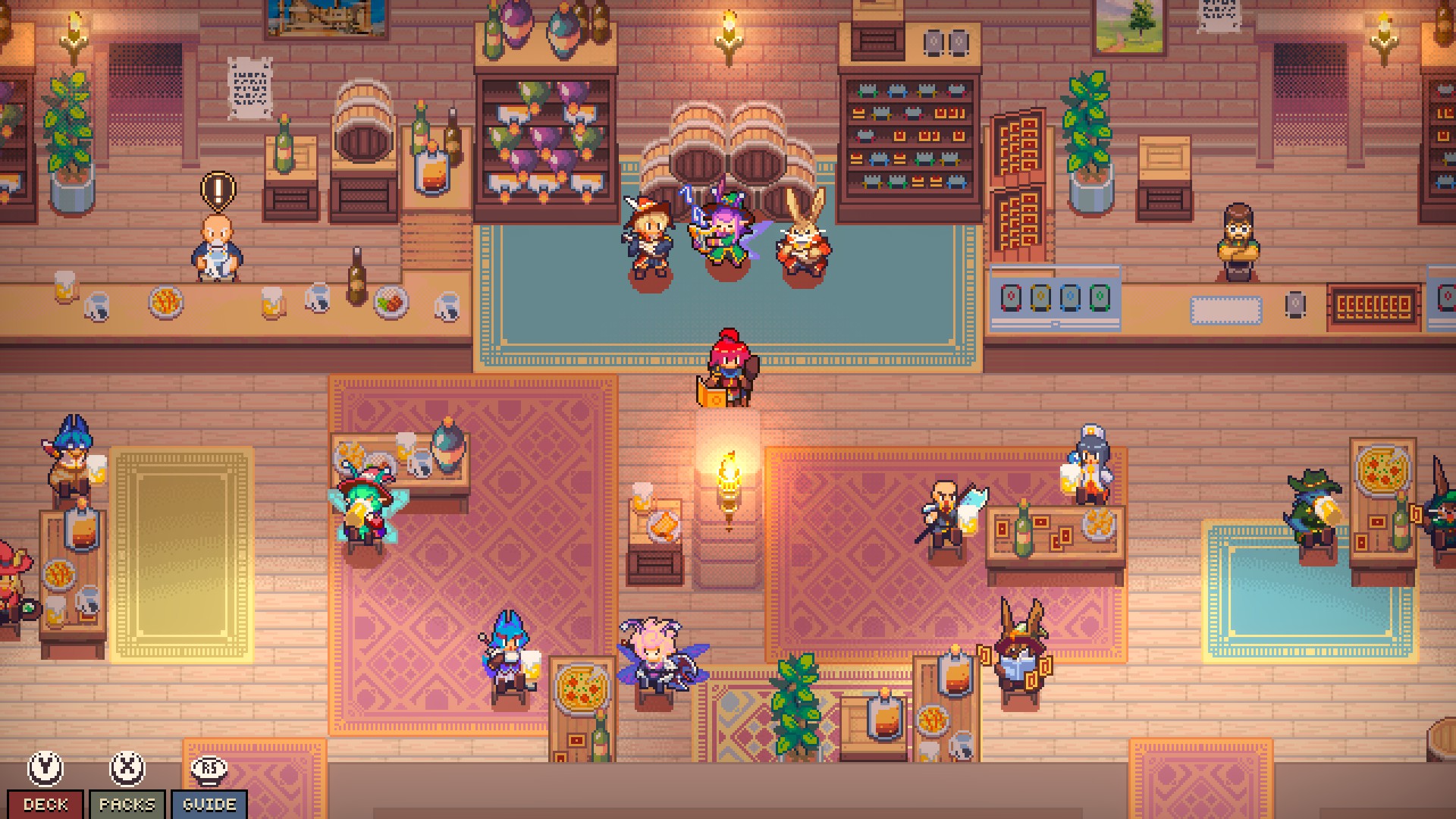
At the start, you choose one of six characters, each has their own combination of starting deck, but only the aesthetics are unique to them as all the cards can be acquired later in the game. Also, you can find the other characters you did not select later in the city, to have an idea of their personalities.

After finishing the tutorial dungeon, you will be able to visit any dungeon of your liking at any time, including the evil tower. I liked this freedom for two reasons: 1 - I might get bored fast playing the same style of level again and again if the levels were forced in order, 2 - The game lets me assess and decide on my risks, even if I am overconfident to take on the evil tower right away.

I also appreciated how unique the dungeons felt, you can see that the developers put considerable effort into them. Each with their own set of architecture tile-set, breakables and puzzles. I think I did not get a repeated monster from one dungeon style to another during my time playing, and all those enemies matched well with their environment.
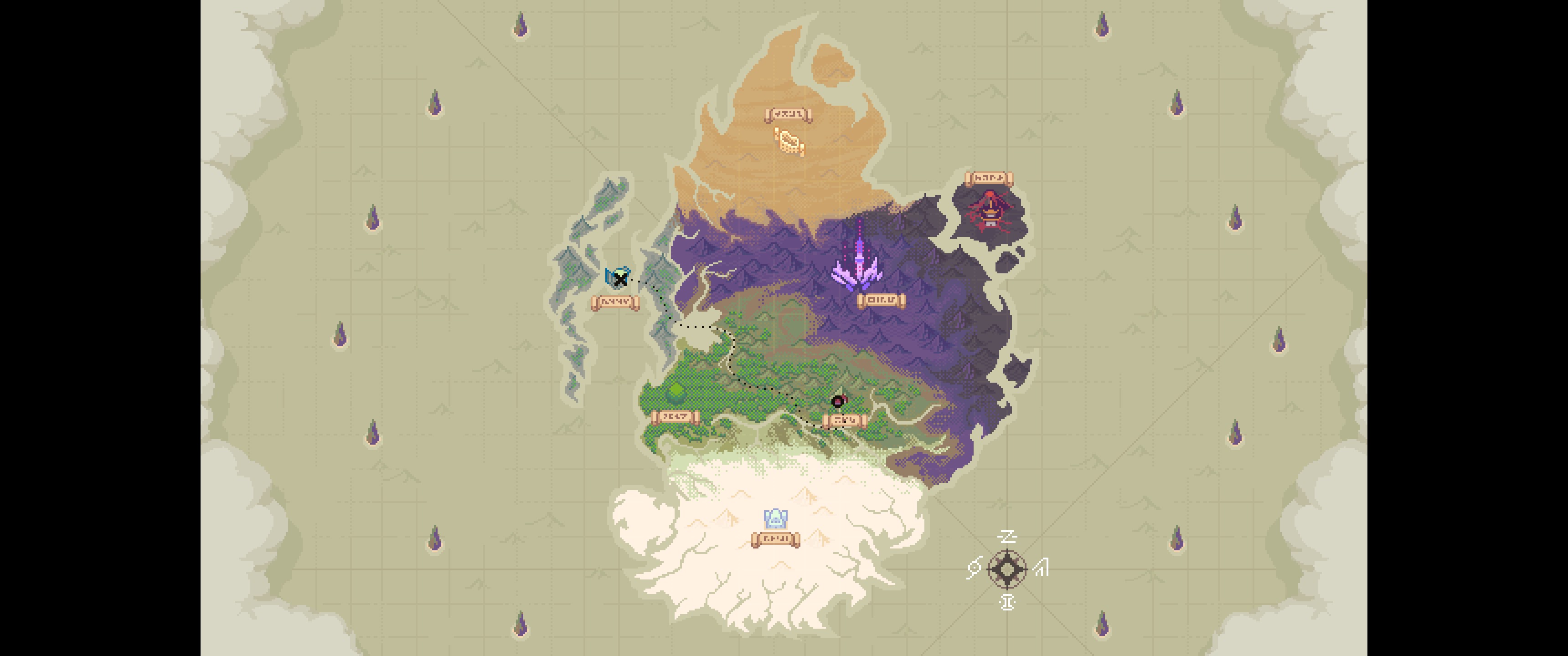
The dungeons are tiled-based, you are free to crawl them until you enter a room with enemies, then the room locks and your turn starts. You have a limited amount of action points(AP) you can take in your turn, represented by AP, it is used to move, attack or use a card in your hand - think of them as skills, each action costs one point. Once all your AP is used, or if you skip, the enemies act one at a time, in order, once they are done, it is back to you. Once you defeat the enemies, you are free to walk around again.
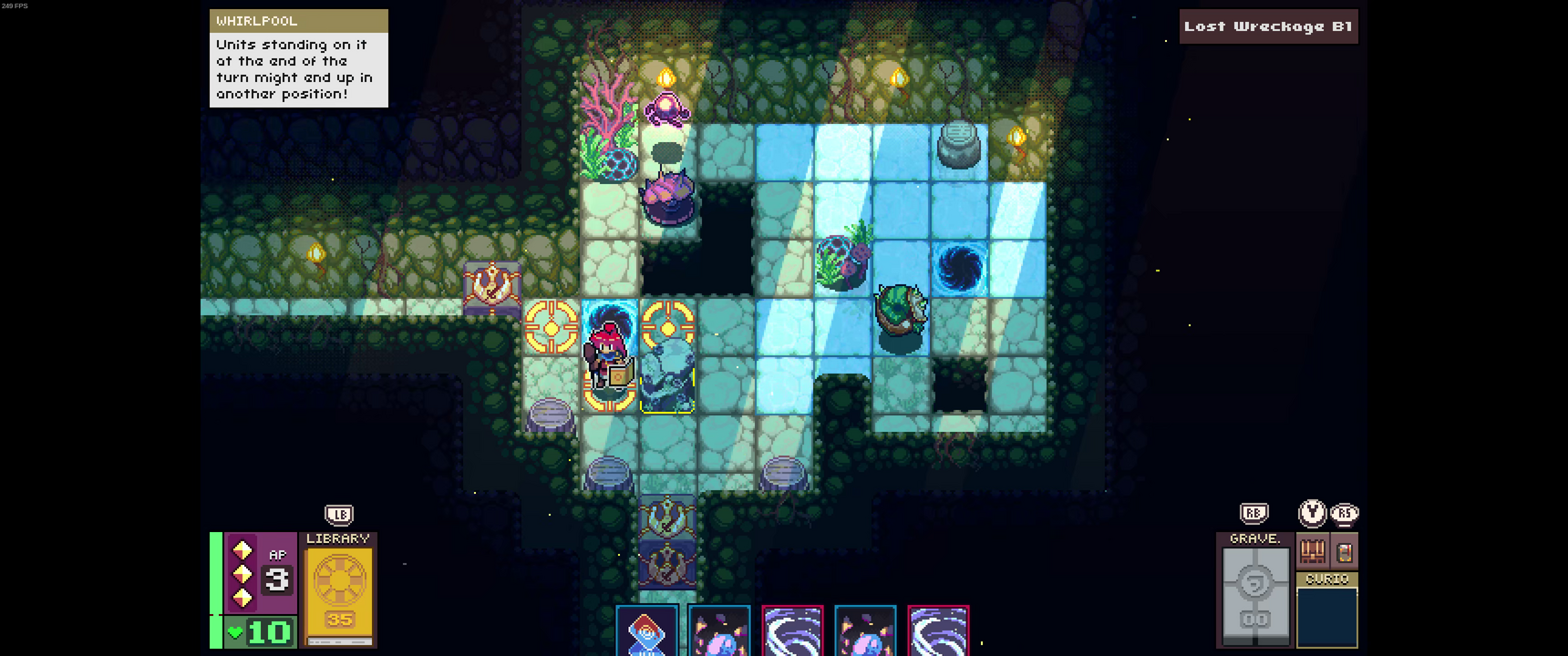
You can hover over your enemies to figure out their next skill or movement range, it can help you prepare what skills to use or which one to target first. The enemies skills also damage other enemies, so you can use it to your advantage by kiting an enemy to go in the path of a skill.
Besides enemies, you will find treasure rooms and puzzle rooms, once the puzzles are solved, they will unlock a path to some reward. You progress in the dungeon until you find a way out or die, but be careful because on death you will also lose your loot.

At first, I was afraid I would run out of cards to use, as every card you used goes to the graveyard. But eventually, you will find some elements in the rooms with important mechanics, like restoring your life, or shuffling back the graveyard cards into your deck. It made me use cards more often, but I guess that can still be an issue later on in harder levels.
Cards are skills your character can use. I am usually concerned about games that feature cards because it can be hard to build a useful Deck, and they might be too dependent on luck. The starting Decks felt useful, but later I struggled to figure out what cards would help my deck, not much for the cards, but how overwhelming are some of the menus in the game.
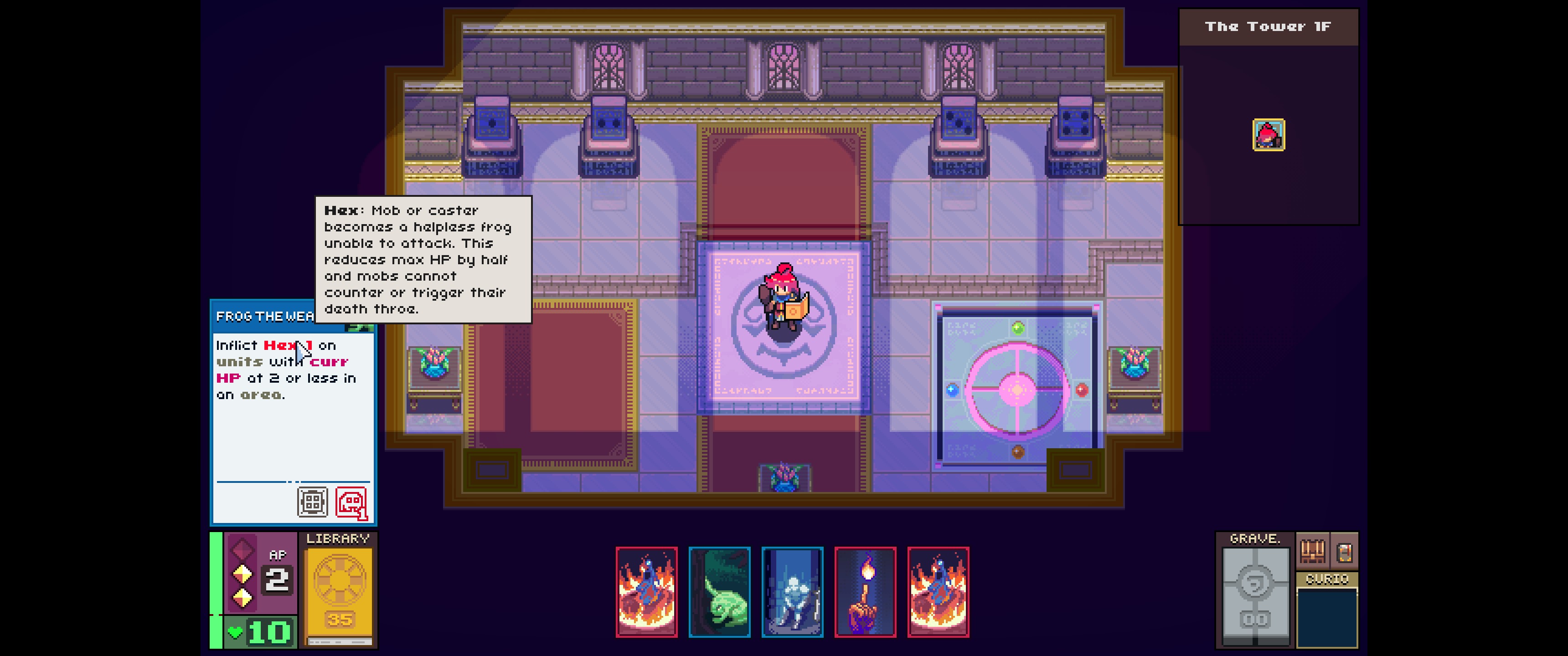
I had an ok time using keyboard and mouse, but I cannot recommend you to use a gamepad yet, and that includes Steam Deck. It felt natural using a mouse, I would hover over things and get a description and details of it, of the monster, the tile, a card or effects. It was easy to select cards, navigate menus and change settings. But the same cannot be told about using controllers.

Interaction using a controller was so chaotic and required many more steps. I would quite often waste AP by walking instead of selecting a card or trying to get the details of an enemy. Navigating menus were problematic as the buttons would behave differently in each menu, for example, if you use O/B to close or cancel most of the time, for a few menus it will not work that way, and you will need to press a different button. Also, navigating a menu with two columns is a headache if one of those columns is filled with sliders, as the button to change columns is the same as changing sliders. Lastly, I still did not figure out how to hover over a card details to get a description of what it will do, like I would do with a mouse.
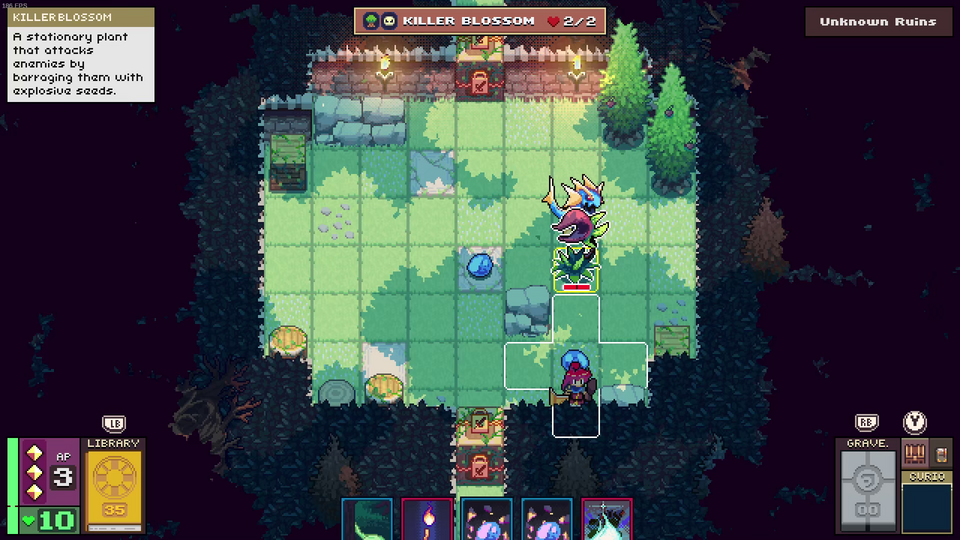
A quality of life I have been seeing in rogue-likes that I missed in Dungeon Drafters is the possibility of stopping the game at any time and continuing later from where I ended. If you leave the game mid-dungeon, it is like you never did that run, and you are back in the city. The only way to keep your progress here is to play until you find the exit/next-level room and leave back to the city.
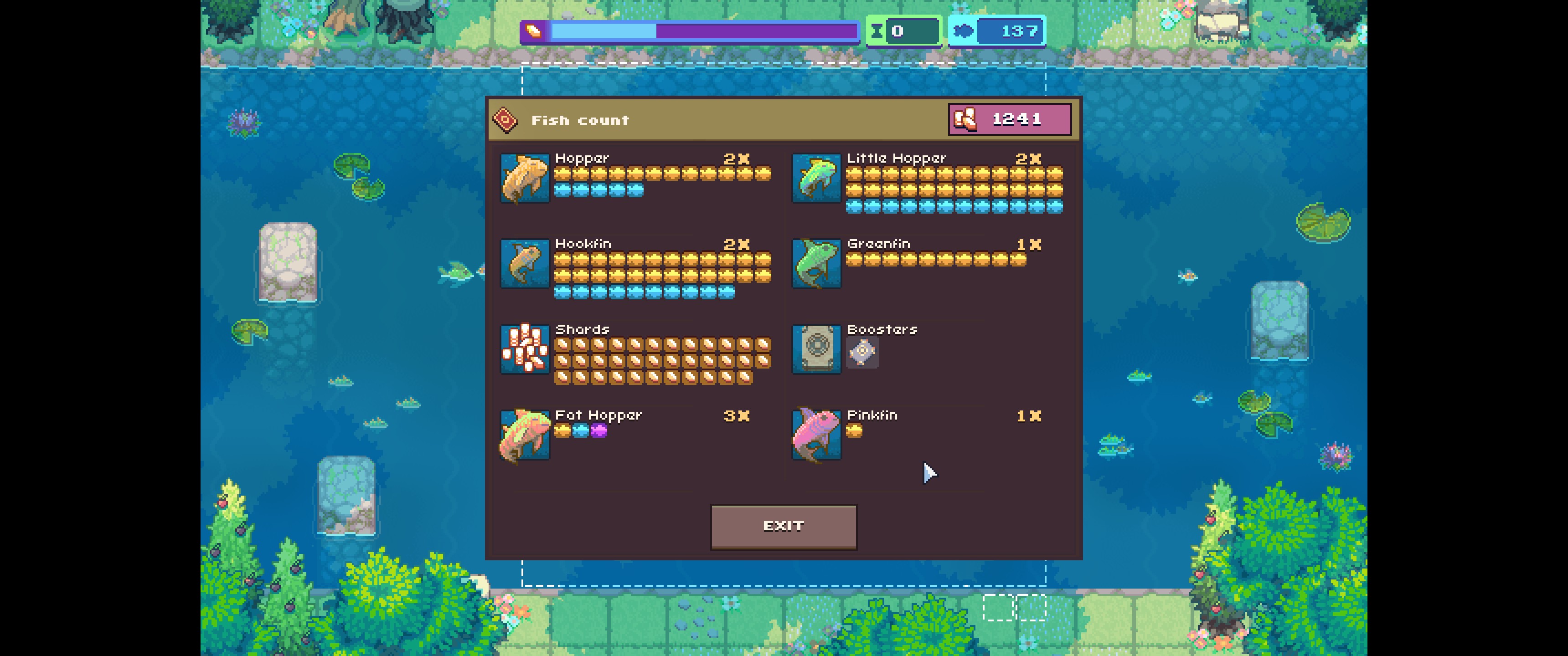
On Steam Deck, I experienced a maximum power draw of 7.5W in busy areas like the tavern and a low of 6.5W. There are not many graphics settings to tweak, and the ones that exist didn’t change the outcome that much. You can play with the Steam Deck settings to get lower power consumption, but I felt that anything 40FPS(5.5W) or lower made the movements too choppy.
Dungeon Drafters is a good dungeon crawler, hindered by poor UI and terrible controller support. If you are interested, Dungeon Drafters is already available on Steam.
Thank you for reading.
Cheers,
Nils
